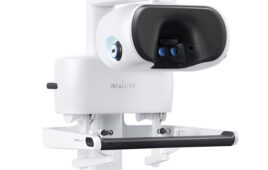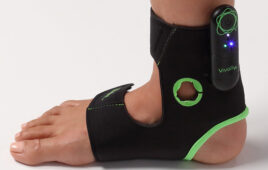With technology moving at breakneck speed and payers continuing to push value-based care, here are a few thoughts on what medtech should expect next year.
Tom Dudnyk, VIVO Agency

(Image by Chuttersnap on unsplash.com)
The popular trends in healthcare, such as population health and value-based care, have gained enough critical mass and momentum that medtech companies and those who invest in them will likely respond with serious, structural moves in 2019, such as:
Integration revisited
A wave of spin-offs and mergers is coming. Value-based care is putting a premium on episodic care management (e.g. total knee replacement) and hospital-to-home chronic disease management (e.g. COPD). Vertically integrated companies and their portfolios are now at a disadvantage and will have to rebuild their portfolios to be horizontally integrated. Combining IT companies with those that provide therapies could produce an AI-enabled disease management powerhouse.
Evolution to home-based care
Hospital-based therapies will move into the home. The home environment is where patients traditionally fall through the cracks, bouncing back to the emergency room with a costly readmission. It is also the hardest place to economically provide care. Hospital-based therapies that are designed to work in the home, such as non-invasive ventilation, will be wirelessly connected to telemonitoring systems where home health or durable medical equipment (DME) providers can see a patient’s status and cost-effectively deploy resources to intervene when necessary.
What’s Amazon up to?
Amazon’s impending move into medtech is driving innovation, alerting traditional medical device companies that yesterday’s go-slow innovation model will no longer stand up to its disruption. Companies are being way more aggressive with their strategic planning and much more ambitious with their R&D than ever before.
AI will continue to disrupt healthcare
Artificial intelligence is going to seriously crimp medical school enrollment in radiology and pathology. In its existing, nascent stage, AI has demonstrated superiority in a small but noteworthy way. For example, the FDA approved IDx-DR’s algorithm for the detection of diabetic neuropathy and it does not require an ophthalmologist to interpret the results. Advances like this are drawing into the question the need for visual diagnosticians and driving the growth in AI-funded startups from $200 million in 2013 to $1.2 billion four years later.
Fine-tuning robotics
Superior return on investments is powering the new wave of robotics in large hospitals. Earlier robotics systems were used as health system billboard advertisements for patients. Today, the requirement for purchase is much higher. As orthopedic surgeons take on more and more financial risk, they need to remove as many sources of costly post-op complications and readmissions as possible.
Tom Dudnyk is president and chief strategist for VIVO Agency, a healthcare marketing firm that specializes in devices, diagnostics and health IT.
The opinions expressed in this blog post are the author’s only and do not necessarily reflect those of Medical Design and Outsourcing or its employees.


![A photo of the Medtronic GI Genius ColonPro polyp detection system flagging a potential sign of colon cancer during a colonoscopy. [Photo courtesy of Medtronic]](https://www.medicaldesignandoutsourcing.com/wp-content/uploads/2024/04/Medtronic-GI-Genius-doctors-268x170.jpg)

